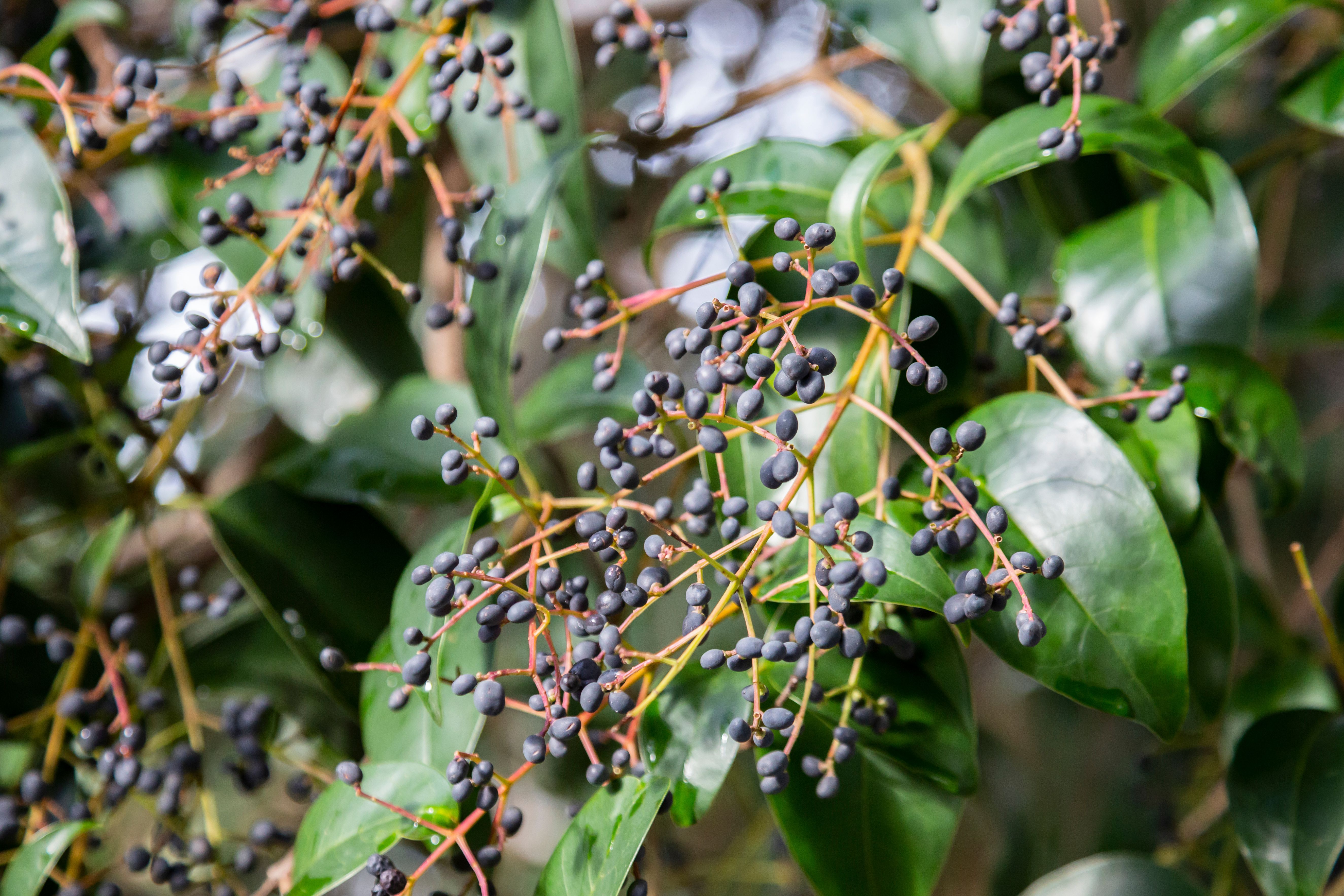November Determined as Optimal Harvest Time for Ligustri Lucidi Fructus
Researchers used metabolomics analysis to measure different harvest times during the whole growing period of ligustri lucidi fructus (LLF), a traditional Chinese medicinal herb.
Ligustri lucidi fructus (LLF), also known as glossy privet fruit, is a traditional Chinese medicinal herb that has been used for centuries to treat a variety of conditions, including liver disease, kidney disease, and rheumatism (1). The harvest time of LLF is important for ensuring its pharmacological activity, but there is no consensus on the optimal time.
Ligustrum tree with blue berries on a tree branch | Image Credit: © Anna - stock.adobe.com

To address this issue, researchers in China conducted a metabolomics analysis of LLF harvested at different times during the growing season. Published in the Journal of Separation Science, their work found that 166 metabolites were expressed at different harvest times. Among these, 59 metabolites increased in content with the growth period, while 35 metabolites decreased in content.
The researchers also found that November was the optimal harvest time for LLF based on multivariate statistical analysis. This is because the content of many important metabolites, such as specnuezhenide, nuezhenoside G13, and neonuezhenide, was at its highest in that month. In addition, the researchers identified 10-hydroxyligustroside, oleoside 11-methyl ester, and salidroside as evaluation indicators of immature LLF. The aforementioned specnuezhenide, nuezhenoside G13, and neonuezhenide were identified as evaluation indicators of mature LLF. This information can help ensure that LLF is harvested at the best time when pharmacological activity is at its highest.
This study used a combined platform of ultrahigh-pressure liquid chromatography–triple quadrupole-(linear ion trap)-tandem mass spectrometry (UHPLC–QqQ-LIT-MS/MS) to conduct the metabolomics analysis. This technique is highly sensitive and selective. It can be used to identify and quantify a wide range of metabolites.
To prepare samples for analysis, the researchers dried and ground the LLF fruits. The ground samples were then extracted with methanol and centrifuged. The supernatant was collected and filtered before being analyzed by UHPLC–QqQ-LIT-MS/MS.
The researchers used a variety of statistical methods to analyze the metabolomics data, including principal component analysis (PCA), orthogonal partial least squares discriminant analysis (OPLS-DA), and variable importance in projection (VIP). These methods were used to identify differential metabolites and to determine the optimal harvest time for LLF.
The results of this study can be used to improve the quality and efficacy of LLF-based traditional Chinese medicines (TCM). By harvesting LLF at the optimal time, practitioners can ensure that the desired herb contains the highest levels of important metabolites. This will lead to more effective treatments for patients. The evaluation indicators identified in this study can be used to assess the quality of LLF products, ensuring that consumers are purchasing the highest-quality products that contain the active ingredients they need.
This article was written with the help of artificial intelligence and has been edited to ensure accuracy and clarity. You can read more about our policy for using AI here.
Reference
(1) Li, X.; Jia, J.; Li, T.; et al. Metabolomics Analysis of Ligustri Lucidi Fructus at Different Harvest Times During the Whole Growing Period Based on Ultra-High-Performance Liquid Chromatography with Mass Spectrometry. J. Sep. Sci. 2023, e2300196. DOI: 10.1002/jssc.202300196
Advances in Non-Targeted Analysis for PFAS in Environmental Matrices
March 27th 2025David Megson from Manchester Metropolitan University in Manchester, UK, spoke to LCGC International about the latest developments in non-targeted analysis (NTA) of per- and polyfluoroalkyl substances (PFAS) in environmental matrices based on a recent systematic review paper he has collaboratively published (1).
Study Explores Thin-Film Extraction of Biogenic Amines via HPLC-MS/MS
March 27th 2025Scientists from Tabriz University and the University of Tabriz explored cellulose acetate-UiO-66-COOH as an affordable coating sorbent for thin film extraction of biogenic amines from cheese and alcohol-free beverages using HPLC-MS/MS.
Quantifying Microplastics in Meconium Samples Using Pyrolysis–GC-MS
March 26th 2025Using pyrolysis-gas chromatography and mass spectrometry, scientists from Fudan University and the Putuo District Center for Disease Control and Prevention detected and quantified microplastics in newborn stool samples.
Multi-Step Preparative LC–MS Workflow for Peptide Purification
March 21st 2025This article introduces a multi-step preparative purification workflow for synthetic peptides using liquid chromatography–mass spectrometry (LC–MS). The process involves optimizing separation conditions, scaling-up, fractionating, and confirming purity and recovery, using a single LC–MS system. High purity and recovery rates for synthetic peptides such as parathormone (PTH) are achieved. The method allows efficient purification and accurate confirmation of peptide synthesis and is suitable for handling complex preparative purification tasks.







